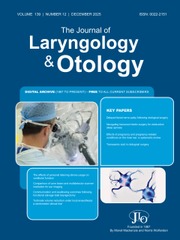Article contents
Why we should be looking for earlobe creases in ENT. A systematic review and meta-analysis of diagonal earlobe crease and coronary artery disease
Published online by Cambridge University Press: 20 December 2021
Abstract
The association between diagonal earlobe crease and cardiovascular disease has been known for several decades. This review investigated whether there is a significant association between the presence of a diagonal earlobe crease and coronary artery disease independent of other confounding factors.
This study was a systematic review and meta-analysis of selected studies using the Preferred Reporting Items for Systematic Reviews and Meta-analyses checklist.
This study included 12 studies in the pooled analysis with 2415 cases and 2545 controls. The study found that patients with diagonal earlobe crease have an increased (four times) likelihood of having coronary artery disease. In addition, despite some previous studies suggesting that diagonal earlobe crease was simply a result of age, all 10 of the included studies that looked at this found that the relationship between diagonal earlobe crease and coronary artery disease was independent of both age and other known cardiovascular risk factors.
Patients with diagonal earlobe crease appear to have an increased risk of coronary artery disease, and this may be higher for patients with bilateral diagonal earlobe crease.
Information
- Type
- Review Article
- Information
- Copyright
- © The Author(s), 2021. Published by Cambridge University Press on behalf of J.L.O. (1984) LIMITED
Footnotes
Dr J Curtis takes responsibility for the integrity of the content of the paper
References
- 2
- Cited by

